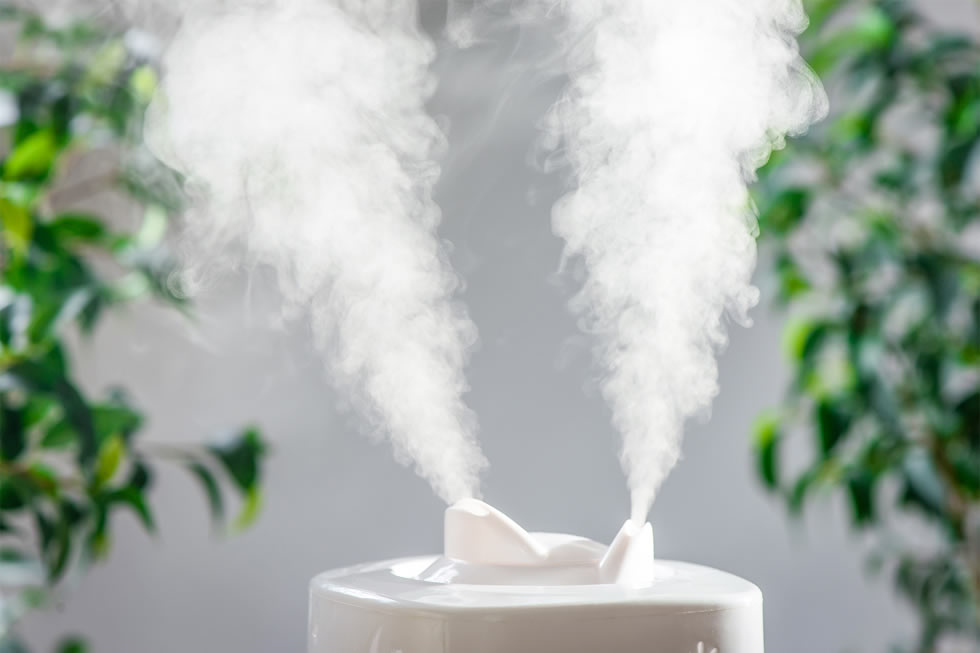The Differences Between an Air Purifier and Air Humidifier
Clean air is healthy air. Keeping the air in your living space crisp and breathable can prove to be hugely beneficial in maintaining your sinus health, the health of your lungs, and supplements your overall well-being. Who doesn’t want an additional boost to their immune system, especially if all it requires to do so is pressing a button and breathing? This is why air humidifiers and air purifiers can prove to be worthy investments, and are particularly useful for those with allergies, sleep apnea, the elderly, babies, and pretty much everyone else looking to boost the cleanliness of their living space.
Although the air purifiers and air humidifiers serve similar purposes, they are actually quite different in the functions they provide you. Here’s a rundown on what each accomplishes and the differences between the two.
Generally, air humidifiers add water to the air, usually utilized to reduce static electricity in the home and to negate health issues associated with dry air. Air purifiers are used to clean the air indoors, removing dust and smoke and helping to remove troublesome pet dander and pollen.
Air Humidifiers
The main function of air humidifiers is to add water to the air of an indoors establishment. What this does is increase the overall humidity of said indoor environment. Dry fall and winter air can prove detrimental to one’s health, causing chapped skin and contributing to existing respiratory problems. One one adds moisture to the air with a trusty air humidifier they can greatly reduce breathing problems and decrease the dried skin. Have a horrible cough that doesn’t seem to go away? Perhaps an air humidifier could be your ticket to a healthier set of lungs!
The benefits of air humidifiers don’t end there. Air humidifiers can also prevent wooden furniture from cracking, and is also known to reduce static electricity in the air. Other benefits include easing the intensity of asthma, and even preserving the appearance of a room, preventing unsightly cracks in paint and furniture.
There are several types of air humidifiers. They include evaporative air humidifiers, which are cold humidifiers but use a fan to evaporate water into air. Ultrasonic air humidifiers, which produce a cool mist at quiet, barely noticeable volumes. Steam vaporizer air humidifiers expel a warm mist after heating the water first. And lastly are the impeller air humidifiers which produce a cool, satisfying mist, but are generally much louder and abrasive on the ears.
Air Purifiers
Air Purifiers are devices that effectively remove contaminants from the air. This can prove highly beneficial to those who suffer from allergies or asthma, to the point that health care professionals commonly recommend the use of air purifiers in light to these potential health benefits. Allergies are caused by airborne particles – as such, using an air purifier to removes these particles will help alleviate allergies symptoms. The air purifiers directs the air through a filter, catching a variety of potentially harmful airborne contaminants and pollutants. These contaminants and pollutants may be the cause of a range of illnesses, proving especially threatening to those who suffer from allergies and asthma. This is where the air purifier comes in. Air purifiers help clear a room of second hand smoke and pet dander, just for two brief examples.
Another benefit of air purifiers is removing unwanted odors. Second hand smoke, or the smoke caused by the ignition and inhalation of medical marijuana, can both leave an unpleasant and unwanted smell. Air purifiers can help free the room of this stench, easing mental duress caused by smoke as well as clearing the air of the potentially harmful components within the smoke.
Air purifiers aren’t perfect, though. They oftentimes require frequent maintenance, frequent cleaning, and can actually produce ions and ozone. Also, while some purifiers prove effective in clearing dust they may not be as helpful with stenches. Other air purifiers, still, may be very helpful in eliminating smells but do poorly in cleaning the air of pollutants and dust.




